1. Orientierung im Gelände
1.1 Grundlagen
Jeder Kompass ist ein Winkelmessgerät. Man
misst stets den Winkel von der Nordrichtung
(rote Hälfte der Nadel) zur Zielrichtung im
Uhrzeigersinn (siehe Bild 1). Dieser Winkel
heisst „Kurswinkel“ oder „Marschzahl“.
1.2 Bestimmen der Marschrichtung
Aus der Wanderkarte erhält man den Kurs-
winkel, wenn man den momentanen Standort
und den Zielpunkt mit einer geraden Linie
verbindet und an diese Verbindungslinie die
Anlegekante so anlegt wie auf Bild 2. Dreht
man die Kompassdose, bis ihr Nordpfeil in
Nordrichtung der Karte zeigt, so kann man an
der Ablesemarke des Geräts die Marschzahl
ablesen.
Man hält das Gerät waagerecht vor sich hin
wie auf Bild 3. Dann dreht man sich auf der
Stelle so weit, bis sich Nordpfeil der Dose und
Magnetnadel decken, d. h. nach Norden
zeigen.
Über die beiden Peilmarken blickend sucht
man sich nun ein Hilfsziel, z. B. einen auf-
fallenden Baumwipfel oder einen entfernten
Berggipfel. Ein genaueres Ergebnis bringt
die Verwendung eines Spiegels zum Beob-
achten der Magnetnadel bei gleichzeitigem
Peilen in Augenhöhe (siehe Bild 3).
1.3 Umgehung von Hindernissen
Einem Hindernis weicht man aus, indem man
die Marschrichtung rechtwinklig verlässt und
dabei die gemachten Schritte zählt.
(siehe Bild 4).
Ist das Ziel nicht weit entfernt, kehrt man
durch Zählen der Schritte auf die ursprüng-
liche Linie zurück.
1. Orientation in the Country
1.1 Basic Facts
A compass is an angle meter. The angle is
always measured clockwise from the northern
direction (red half of the needle) to the
destination direction (cf. figure 1). This angle
is called ”magnetic azimuth” or ”altitude”.
1.2 Determination of the Direction of March
The magnetic azimuth is obtained by
connecting the present position and the
destination point on a trail map with a straight
line and then putting the contact edge to this
connection line as described in figure 2. By
turning the compass box until its north arrow
points to the northern direction of the map, the
altitude can be read at the index mark of the
instrument.
Hold the instrument horizontally before your body as
shown in figure 3. Then turn around until the
northern arrow of the box is covered by the magnetic
needle, i. e. it points to the north. Look over the two
bearing points and try to find an auxiliary destination
now, e. g. a noticeable treetop or a distant mountain
summit. Using a mirror for observing the magnetic
needle and simultaneously bearing at eye level gives
a more precise result (cf. figure 3).
1.3 Bypassing Obstacles
An obstacle is bypassed by leaving the
direction of march at right angles and
counting the steps made (cf. figure 4).
If the destination is not far away, return to the
original line by counting your steps again.
1. Orientation dans le paysage
1.1 Fondements
Chaque boussole est un instrument pour
mesurer des angles. On mesure I’angle
toujours en partant de la direction de nord en
sens des aiguilles d’une montre vers la
direction de destination (cf. figure 1). Cet
angle s’appelle «azimut magnétique» ou
«nombre directeur».
1.2 Détermination de la direction de marche
On obtient l’azimut magnétique en liant sur
une carte touristique la position présente au
point de destination avec une ligne droite et
en mettant le bord de la boussole à cette ligne
de jonction selon figure 2. En tournant la boîte
de la boussole jusqu’à ce que sa flèche de
nord montre vers la direction de nord de la
carte, on peut lire le nombre directeur sur la
division de lecture de I’instrument.
On tient l’instrument horizontalement devant soi selon
figure 3. Puis on tourne jusqu’à ce que la flèche de
nord de la boîte et l’aiguille aimantée coïncident,
c’est-à-dire montrent vers le nord. En voyant au-
dessus des deux points de relèvement on cherche
maintenant une destination auxiliare, p. e. une cime
frappante d’un arbre ou le sommet d’une montagne
éloignée. On obtient un résultat plus exact en utili-
sant un mirroir pour observer l’aiguille aimantée et au
même temps relevant à hauteur de l’oeil (cf. figure 3).
1.3 Tourner des obstacles
On tourne un obstacle en quittant la direction
de marche à l’angle droit et en comptant ses
pas (cf. figure 4).
Si la destination n’est pas loin, on retourne à la
ligne originaire en comptant ses pas de
nouveau.
Nordrichtung / Northern direction / Direction de nord
Kurswinkel / Magnetic azimuth / Azimut magnétique
Zielrichtung / Destination direction / Direction destination
Ablesemarke für den Kurswinkel / Index mark for the
magnetic azimuth / Point de lecture Azimut
Anlegekante für das Arbeiten mit der Karte
Contact edge for working with a map
Bord latéral pour travailler avec une carte
Magnetnadel (die rote Hälfte zeigt in Richtung Nord)
Magnetic needle (the red half points to the north)
Aiguille aimantée (la partie rouge montre vers le nord)
durchsichtige Kompassdose mit Nordpfeil,
360°-Kreisteilung und Flüssigkeitsdämpfung
Transport compass box with north arrow, 360°-circular
graduation and liquid dampening
Boîte transparente de la boussole avec une flèche de
nord, 360° division circulaire et atténuation de liquide
Peilmarke / Index mark / Point de relèvement
Bild 1
Figure 1
Figure 1
Bild 2
Figure 2
Figure 2
Bild 3
Figure 3
Figure 3
Bild 4
Figure 4
Figure 4
Ziel
Destination
Destination
momentaner Standort
Present position
Position présente
Fluss
River
Rivière


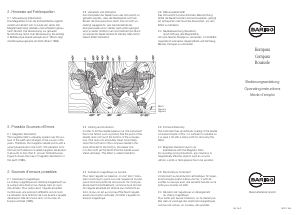

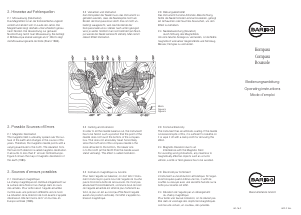
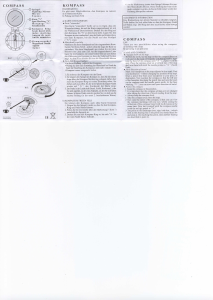
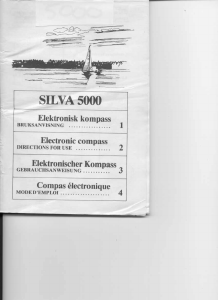
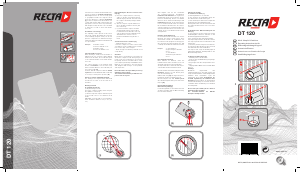
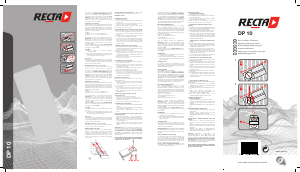
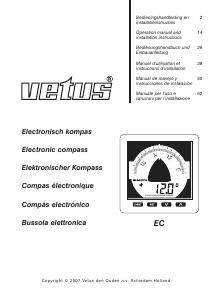
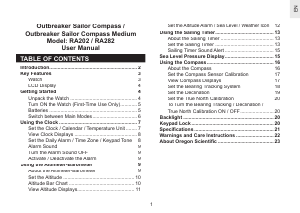
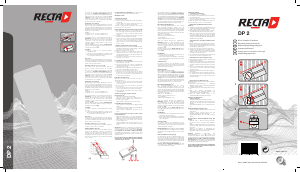
Praat mee over dit product
Laat hier weten wat jij vindt van de Barigo Model 15 Kompas. Als je een vraag hebt, lees dan eerst zorgvuldig de handleiding door. Een handleiding aanvragen kan via ons contactformulier.